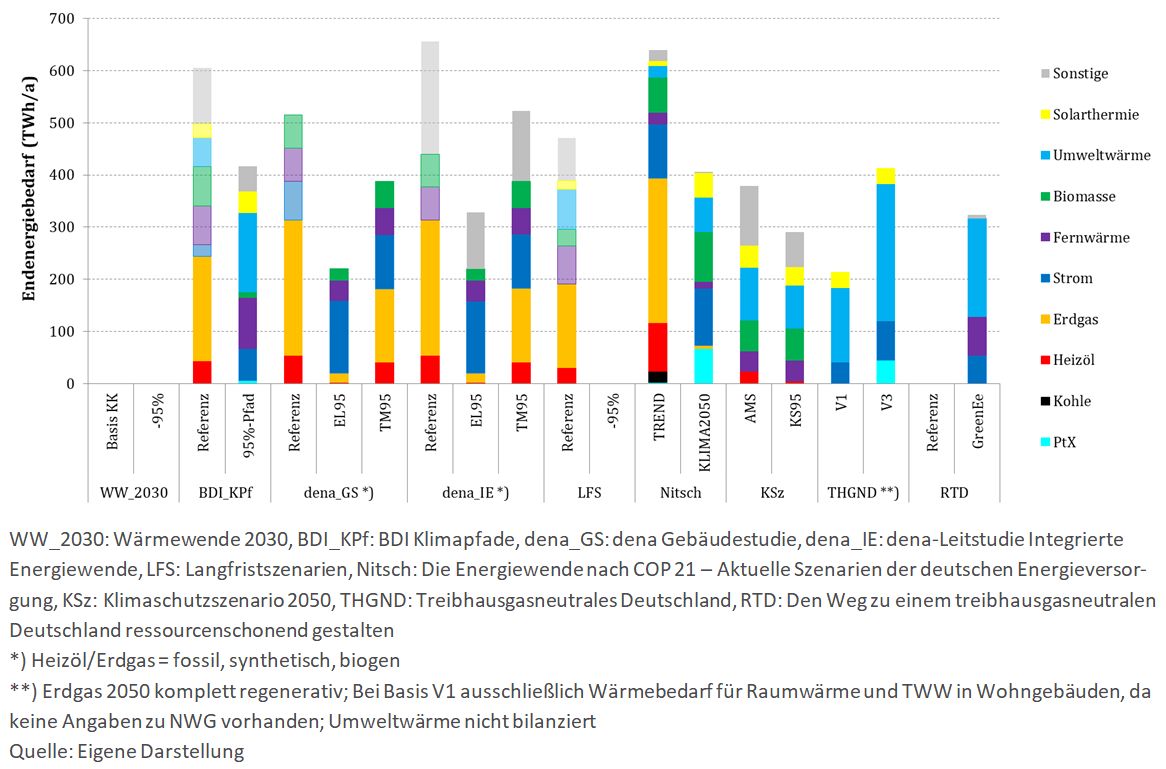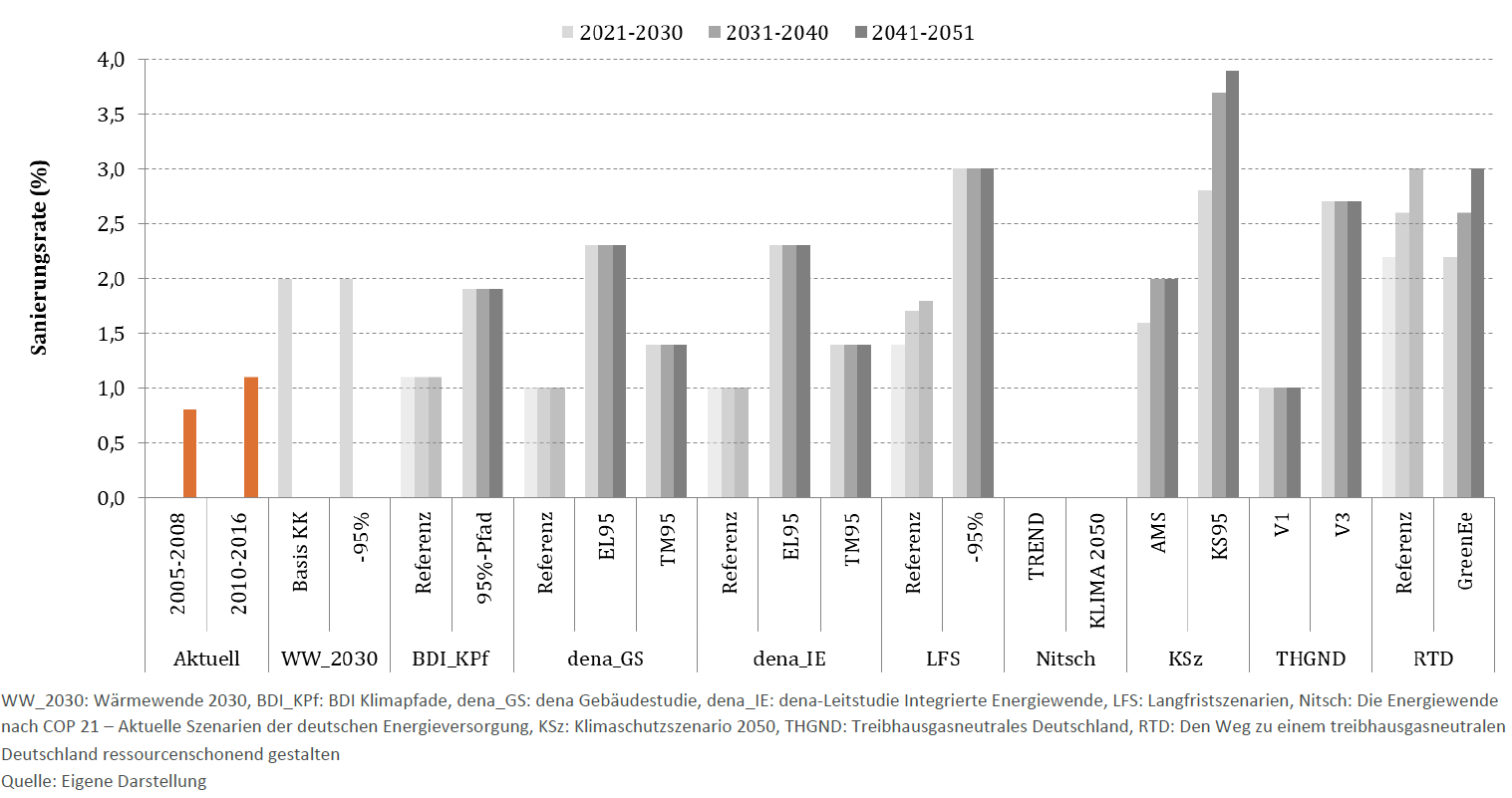| Duration: | 11/2017 - 10/2020 |
| Contracting Authority/ Sponsors: | Umweltbundesamt |
| Project Partners: | Öko-Institut e.V., Hamburg Institut |
| Project Focus: |
SysWärme – Systemic Challenge of Heating Sector Transformation


Within the international climate protection policy and climate protection targets, the Federal Republic of Germany has committed itself to reducing emissions by 80 to 95% by 2050 (compared to 1990). To achieve this goal, emissions in all sectors (power generation, buildings, transport, industry, commerce, trade and services, agriculture and forestry...) must be significantly reduced. This will lead to massive structural changes in every area. In this context, the building sector is considered to be of enormous importance; approx. 35% of the total energy consumption is allocated here. For this reason, the Federal Government has committed itself in the Energy Concept and the Climate Protection Plan 2050 to achieve an almost climate-neutral building stock by 2050 – reduction of the (non-renewable) primary energy demand by 80% by 2050 compared to 2008. Consistent implementation of the objectives of the Convention on Climate Change (COP 21) implies, however, that in view of the mitigation restrictions in other sectors (above all agriculture, process-related emissions from industry) an even greater reduction is necessary and that a completely climate-neutral building stock may therefore have to be striven for.
In order to achieve the overall goal of reducing greenhouse gas emissions by 80 to 95% by 2050, it is essential that the individual sectors of the energy system are not viewed separately, but that their respective transformation is coordinated. Central to this is the increasingly strong link between the individual application sectors (e.g. transport, industry) and the electricity system. A particular challenge in the transformation of the heating market is the great heterogeneity in terms of technologies, market structures and cost structures. In addition, the long investment cycles in structural and technical renovation measures mean that the sector is very sluggish. For this reason, the implementation of measures (technical measures and political instruments) must be planned in advance and addressed at an early stage. The central goal of the project is the scientific analysis of the challenges of the transformation of the building sector/heating sector. The focus is on two target areas:
- Target area 1: Analysis of the challenges in the heating sector regarding the achievement of an almost climate neutral building stock (compared to 2008) in accordance with the federal energy efficiency strategy for buildings;
- Target area 2: Analysis which maximum contribution buildings can make to reducing greenhouse gas emissions by up to 95 % in 2050 (compared to 1990);
The analysis of the heating sector refers to space heating, domestic hot water and space cooling. Process heat and cold as well as lighting in non-residential buildings are excluded from the detailed analysis. The goals of the project are:
- Analysis of existing scenarios; evaluation of these with regard to the achievement of a total greenhouse gas reduction target of 80 to 95% by 2050;
- Differentiation of the derived statements depending on the ambition level within the target corridor for the overall greenhouse gas emission reduction;
- Identification of key measures as decisive components of the transformation in the heating sector to achieve a high energy efficiency and a sufficient share of renewable energies (RE) in the provision of space heating, domestic hot water and cooling; in the process of:
-
- Considering the energy and climate policy target architecture of the German government,
- Considering technical potentials and systemic dependencies,
- Developing key measures separately for the two target areas mentioned above;
- Impact analysis of the influences in the heating market from the point of view of various relevant actors and determination of their possible contributions to the achievement of objectives;
- Identification of technical reduction options to meet energy targets and existing barriers to implementation;
- Differentiated determination of suitable solutions to overcome the obstacles in the transformation process at specific points in time or implementation periods;
- In-depth consideration of the role of heating and cooling networks in the transformation for the two defined target areas
- Concrete recommendations for the design of energy policy in the provision of heating and cooling for buildings, in particular with regard to the further development of existing measures and instruments, taking into account the particularities of various players on the heating market.